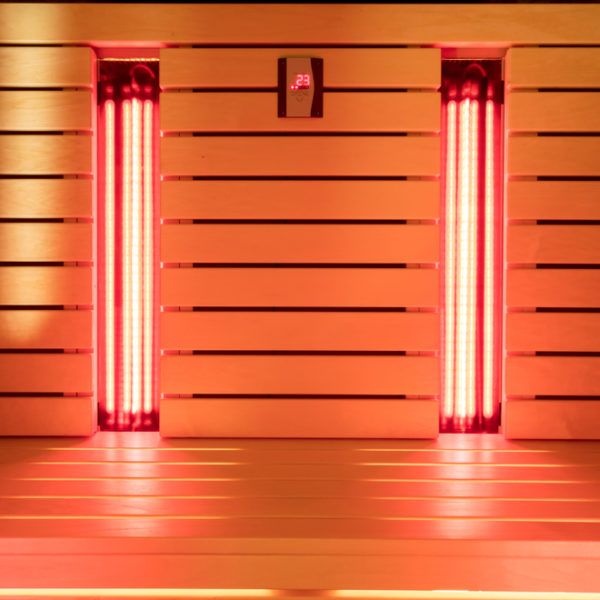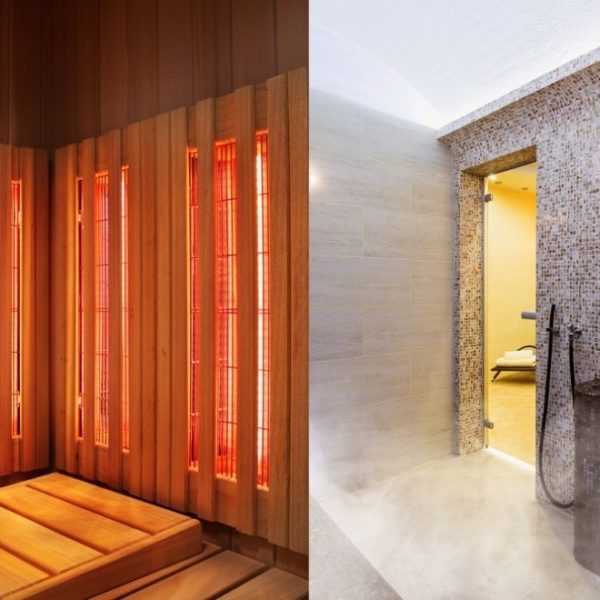Did you know that specialists worldwide esteem the use of infrared technology in the fight against cancer?
This article will explore how a trip to the infrared sauna can significantly improve cancer patients’ healing or prevention journeys.
The Dreadful C-Word
Cancer patients typically undergo surgery, receive radiation, or experience chemotherapy in the hopes of deterring the progression of this nasty disease.
However, depending on a patient’s prognosis and specific type of cancer, one of the therapies, as mentioned earlier, may even yield an inspiring survivor story.
What is Cancer?
According to the Cancer Treatment Centers of America homepage, cancer is the “uncontrolled growth of abnormal cells in the body. Cancer develops when the body’s normal control mechanism stops working. Old cells do not die and instead grow out of control, forming new, abnormal cells.”
In addition, cancer can affect anybody, anywhere, and at any time. It is a fugitive from justice.
Cancer Treatments
In addition to the three primary cancer treatments, patients will also pursue supportive therapy to help them cope with the physiological side effects of the dreadful C-word.
Supportive care aims to reduce one’s physical or emotional side effects through nutrition, a vast array of natural therapies, rehabilitation practices, and behavioral health care.
Infrared Technology
Infrared radiation has existed since the creation of our planet Earth. However, it wasn’t until Sir Frederick William Herschel’s discovery in the year 1800 that he demonstrated multiple types of light that are not visible to the human eye.
Since Sir William Herschel’s experiment with calorific rays, infrared technology has permeated almost every industry thinkable. Infrared technology exists in the security, construction, meteorology, aerospace, mechanical, archaeological, and medical industries.
Infrared in the World Around Us
To say that the sun is critical to the human condition would be an understatement- without it, we would cease to exist.
Science has harnessed this life-giving source to heal, manage, and even treat many emotional, mental, and physical disorders. But, the bottom line is that the sun is a physiological phenomenon.
The infrared region of the electromagnetic spectrum consists of three distinct ranges- near-, mid-, and far-infrared. Therapeutically speaking, the entire infrared spectrum is valuable; however, specific wavelengths are better suited for treating or managing particular conditions.
Infrared in Medicine
It fascinates me that not only did a Japanese scientist first patent infrared technology for sauna therapy application, but it was another Japanese scientist who found that targeted photoimmunotherapy can activate “rapid and selective killing of cancer cells.”
The list of benefits connected to infrared technology is wide-ranging, from mindfulness and relaxation to the selective destruction of immune-suppressing cancer cells.
For the remainder of this article, we will focus on infrared saunas and photoimmunotherapy as two potential relief therapies for cancer patients worldwide.
Infrared Saunas
Saunas utilize various wavelengths of infrared to promote their healing and treatment properties. So, we must first understand that the wavelengths of infrared rays lie between 700 and 100,000 nanometers- quite an expansive range.
Very briefly, let’s look at each of the specific ranges. Far-infrared, the longest wavelength, penetrates the deepest and is best adapted for weight loss, detoxification, and increased blood flow.
Mid-infrared, are longer than near-infrared wavelengths and are effective at improving your circulation and increasing healing times.
Near-infrared, by far the shortest wavelength is absorbed right below your skin surface, promoting skin cell regeneration and revitalization.
The Japanese conception of the infrared sauna utilized far-infrared, which is typically between 3000 and 100,000 nanometers. Although still beneficial, the penetrating factor is decreased to approximately 0.1 mm beneath the skin and is best suited for topical therapies.
Scientists later revealed that near-infrared, ranging between 700 and 1,400 nanometers, delivers far-deeper penetrating benefits to the human body.
But research has not yielded. Now, research indicates that the specific infrared region between 810 and 830 nanometers directly affects ATP production.
What is ATP, and Why Does It Matter?
ATP is a carrier for synthesized energy housed within the mitochondria of our cells. The effects of this range penetrate even deeper below the skin, which promotes wound healing and other regenerative properties.
Because “all humans produce infrared, it’s safe, natural and easily absorbed by our tissues.” We could say then that people worldwide have taken advantage of the substantial health benefits associated with infrared since the beginning of our time here on Mother Earth.
How Will A Sauna Visit Help Treat Cancer?
Research and numerous studies support the findings that infrared therapy offers a pretty incredible double-whammy to our health. Not only does the hypothermic effects of infrared significantly challenge toxic and malignant cells, it simultaneously nourishes and regenerates our body at the cellular level.
The National Cancer Institute defines hyperthermia as “a type of cancer treatment in which body tissue is exposed to high temperatures.” Since high temperatures affect weaker cells while healthy tissue remains untouched, infrared is the perfect adversary against cancer.
Repeated infrared sauna use also improves blood circulation. The radiant heat penetrates well beyond the skin level affecting the body at the cellular level. With increased ATP production, freshly-oxygenated hemoglobin flows like a river through our bodies.
This benefit is also connected to the reversal of cancerous cell growth because cancer cells cannot thrive in highly-oxygenated environments. Thus, in addition to oxygenation, people are attracted to the significant detox benefits of infrared sauna use.
Infrared saunas have various detoxing benefits ranging from topical flushes to ridding one’s internal organs of toxins. In addition, since infrared directly penetrates the human body, this type of sauna is significantly more efficient at producing sweat than other heating alternatives.
Infrared heating allows people to enjoy longer sessions at the sauna and even opens up more opportunities for at-risk groups to partake in this therapy.
Success Stories
Infrared technology has inspired people worldwide to give infrared sauna therapy a real opportunity. Infrared heat hit the clinical market running after NASA-led research confirmed that infrared light promoted faster healing in astronauts.
Since then, the Japanese have used infrared in Waon Therapy, witnessing numerous patients recover from otherwise unmanageable illnesses. For example, in chronic diseases such as heart failure and peripheral arterial disease, Waon Therapy has reduced cardiac events in its patients.
Entrepreneurs worldwide are taking advantage of franchising opportunities to make infrared saunas accessible to their local communities. Couples such as Laurie and Jon of Breathe Salt & Sauna or The Kurzes of Perspire Sauna Studio are just two examples.
As recovering breast cancer patients, the women in these couples turned to infrared sauna therapy to aid their healing process. Their husbands suffered from asthma and shoulder tightness, respectively, but soon both became believers after noticing the tremendous healing effects of hyperthermia on their bodies.
The list of benefits attached to infrared sauna use is prolific; however, more advanced research is now establishing photoimmunotherapy as a viable cancer treatment of the masses.
Photoimmunotherapy
If you are an Arnold Schwarzenegger fan, especially in his role as The Terminator, I suggest you watch this video issued by the National Cancer Institute.
It is a virtual look into how near-infrared photoimmunotherapy uses an “antibody-photoabsorber conjugate to bind to the cancer cells.” The cells burst when later targeted and blasted with infrared light.
Ok, so what does all that even mean?
Well, Japanese Doctor Hisataka Kobayashi, who works for the U.S. National Institute’s for Health, has researched cancer treatments for over 30 years and applied his discovery to his first clinical trial in mid-2015.
Dr. Kobayashi designed a chemical compound that would react with infrared light producing the results he sought. This chemical combination of two or more substances is otherwise known as a conjugate in the medical field.
A photo-absorber is much easier to understand- it is a molecule that can absorb light at a specific wavelength, in this case, infrared light.
Conjugates have previously existed in cancer treatments; however, Dr. Kobayashi worked tirelessly to create a conjugate that would activate when infrared light is applied.
IR700 is the name given to the antibody-photoabsorber that Dr. Kobayashi’s research had birthed. And the reason that infrared light was chosen as the specific wavelength of light therapy to apply is because of its skin-penetrating ability without causing negligent damage.
Infrared’s Meeting with Cancer
This year marks yet another pivotal mark in cancer treatment history. This year, photoimmunotherapy was used on just its second human cancer patient since its introduction during Barack Obama’s presidency.
So how exactly has Dr. Kobayashi’s research opened up a way for treating cancer?
The desired result occurs when infrared light targets the conjugate. So, first, the conjugate must be injected into the mouse or human candidate. Next, the antibody design tracks cancerous cells within the body and binds to them, becoming the target for infrared light.
Lastly, infrared light is applied, which seeks and destroys the photoabsorber antibody. Specifically, the light causes the cancerous cell to swell past its limitations, causing it to burst.
Peter Choyke, M.D., chief of CCR’s Molecular Imaging Program, explained that “this rapid cell death is called necrotic (or immunogenic) cell death.”
Infrared Against Cancer
The antibody-photoabsorber conjugate, along with infrared light, is used for localized cancerous cell therapy. Although locally directed, photoimmunotherapy may potentially be systemic, affecting other immuno-related areas of a cancer patient’s body.
One of the critical elements in cancerous cell destruction is the host’s immune response. In simpler terms, a healthy immune system significantly contributes to the effectiveness of photoimmunotherapy.
Pre-clinical experiments have routinely used mice to study the effectiveness of photoimmunotherapy against the “five major types of cancer, including carcinoma, sarcoma, melanoma, lymphoma, and leukemia.”
Near-infrared photoimmunotherapy has proven its effectiveness in each of the primary categories of cancer in pre-clinical trials. In human patients, medical research calls for 690 nanometers of infrared light to target the cancerous cells.
Tumors begin shrinking and disappearing just days after being treated with antibody-photoabsorber photoimmunotherapy. Although a state of hyperthermia immediately affects tumor regression, it is just as important to understand how infrared activates a sustained response of healthy cells by directly influencing the test patient’s immune system.
The observation of promising results on those human patients diagnosed with head and neck cancer is a significant advance for cancer therapy.
Limitations
When it comes to clinical therapy, it is impossible to avoid limitations. However, these do not necessarily have to brood a negative connotation because it is through its boundaries that other possibilities avail themselves.
For example, if surgery, radiation, and chemotherapy were effective cancer treatments 100% of the time, Dr. Kobayashi did not need to dedicate more than one-third of a lifetime to studying alternative cancer treatment methods.
Having said that, as fascinating as photoimmunotherapy sounds, and it is, by all means, it too has constraints. Mainly, even though infrared is penetrative, in some cases, it cannot travel deep enough.
Several solutions are being explored, such as exposing tumor tissue to the infrared, delivering light through endoscopy, or even mechanically injecting the infrared light into the affected cells.
Final Thoughts
Cancer is a horrible ailment that has plagued humanity for thousands of years. And since the variables are so numerous, a prognosis in itself is limited.
Cancer survival statistics by themselves can be pretty vague unless studied more profoundly and categorized as either disease-free or progression-free.
And since statistics do not typically consider the victim’s overall health or other existing patient medical conditions, we are often given a skewed view of reality.
Rather than dwell upon such impersonal results, a cancer patient should consider actively questioning their clinical specialist about their candidacy for infrared treatment or healing relief.
Conclusion
Thanks to the medical research industry at large, photoimmunotherapy is the newest weapon of mass destruction against cancer. Although it has some limitations, the floodgates are already open for continued research.
Let us not forget about the array of therapeutic benefits that infrared saunas may also provide cancer patients. The fascinating aspect of infrared light is its ability to crush malignant cells without harming healthy body tissue.
If cancer could speak, I would say, ‘the war is not over!’
Would you please share your comments or questions below regarding the effects of infrared technology on cancer?








